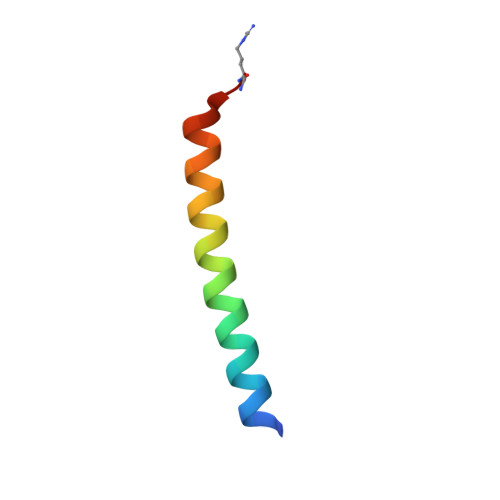The Native GCN4 Leucine-Zipper Domain Does Not Uniquely Specify a Dimeric Oligomerization State.
Oshaben, K.M., Salari, R., McCaslin, D.R., Chong, L.T., Horne, W.S.(2012) Biochemistry 51: 9581-9591
- PubMed: 23116373
- DOI: https://doi.org/10.1021/bi301132k
- Primary Citation of Related Structures:
4DMD, 4DME - PubMed Abstract:
The dimerization domain of the yeast transcription factor GCN4, one of the first coiled-coil proteins to be structurally characterized at high resolution, has served as the basis for numerous fundamental studies on α-helical folding. Mutations in the GCN4 leucine zipper are known to change its preferred oligomerization state from dimeric to trimeric or tetrameric; however, the wild-type sequence has been assumed to encode a two-chain assembly exclusively. Here we demonstrate that the GCN4 coiled-coil domain can populate either a dimer or trimer fold, depending on environment. We report high-resolution crystal structures of the wild-type sequence in dimeric and trimeric assemblies. Biophysical measurements suggest populations of both oligomerization states under certain experimental conditions in solution. We use parallel tempering molecular dynamics simulations on the microsecond time scale to compare the stability of the dimer and trimer folded states in isolation. In total, our results suggest that the folding behavior of the well-studied GCN4 leucine-zipper domain is more complex than was previously appreciated. Our results have implications in ongoing efforts to establish predictive algorithms for coiled-coil folds and the selection of coiled-coil model systems for design and mutational studies where oligomerization state specificity is an important consideration.
Organizational Affiliation:
Department of Chemistry, University of Pittsburgh, Pittsburgh, PA 15260, USA.















